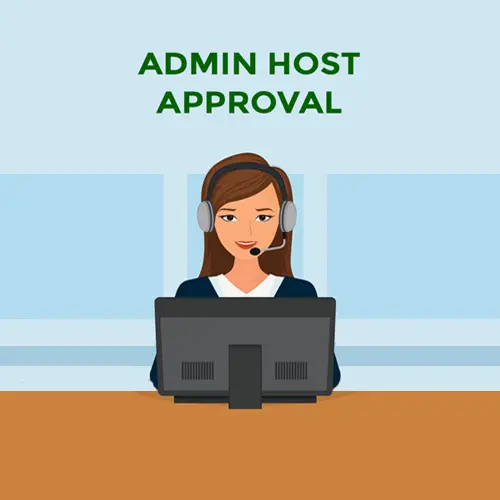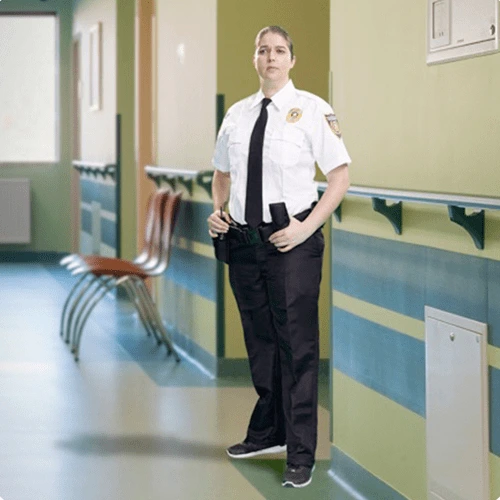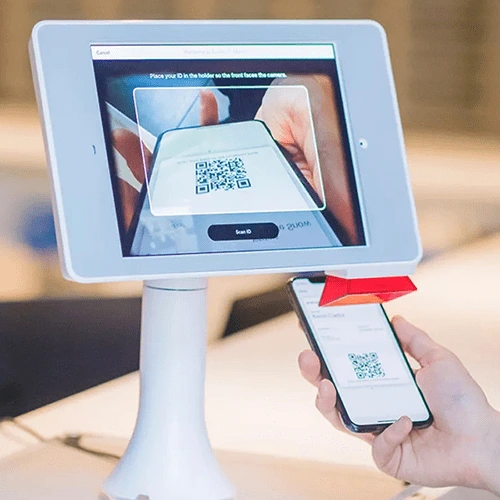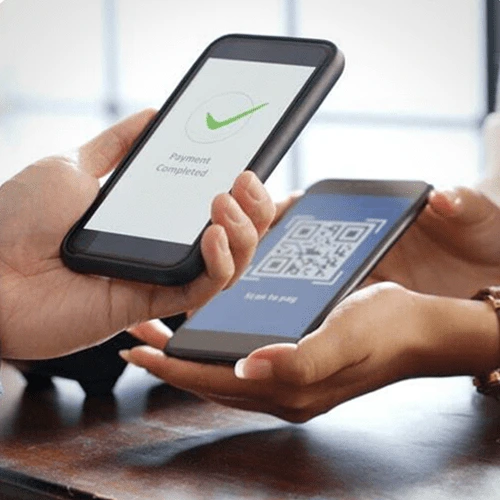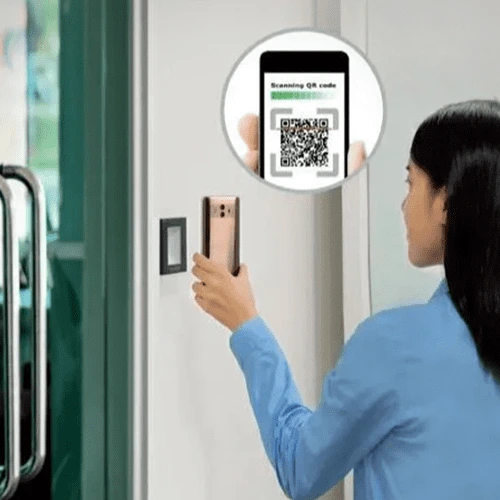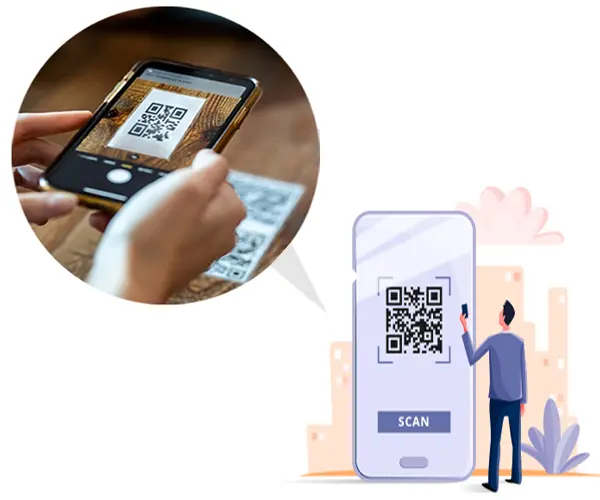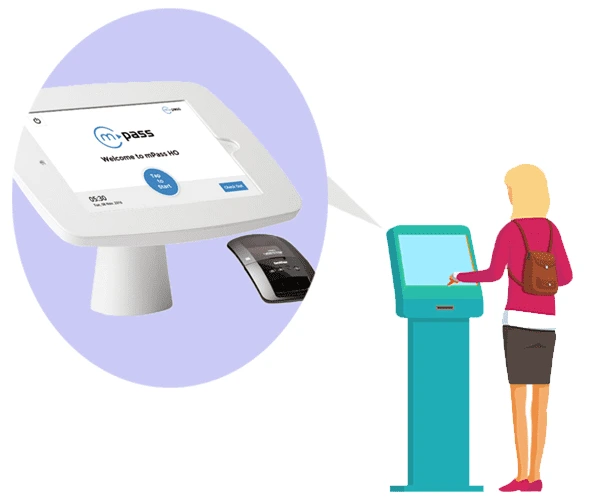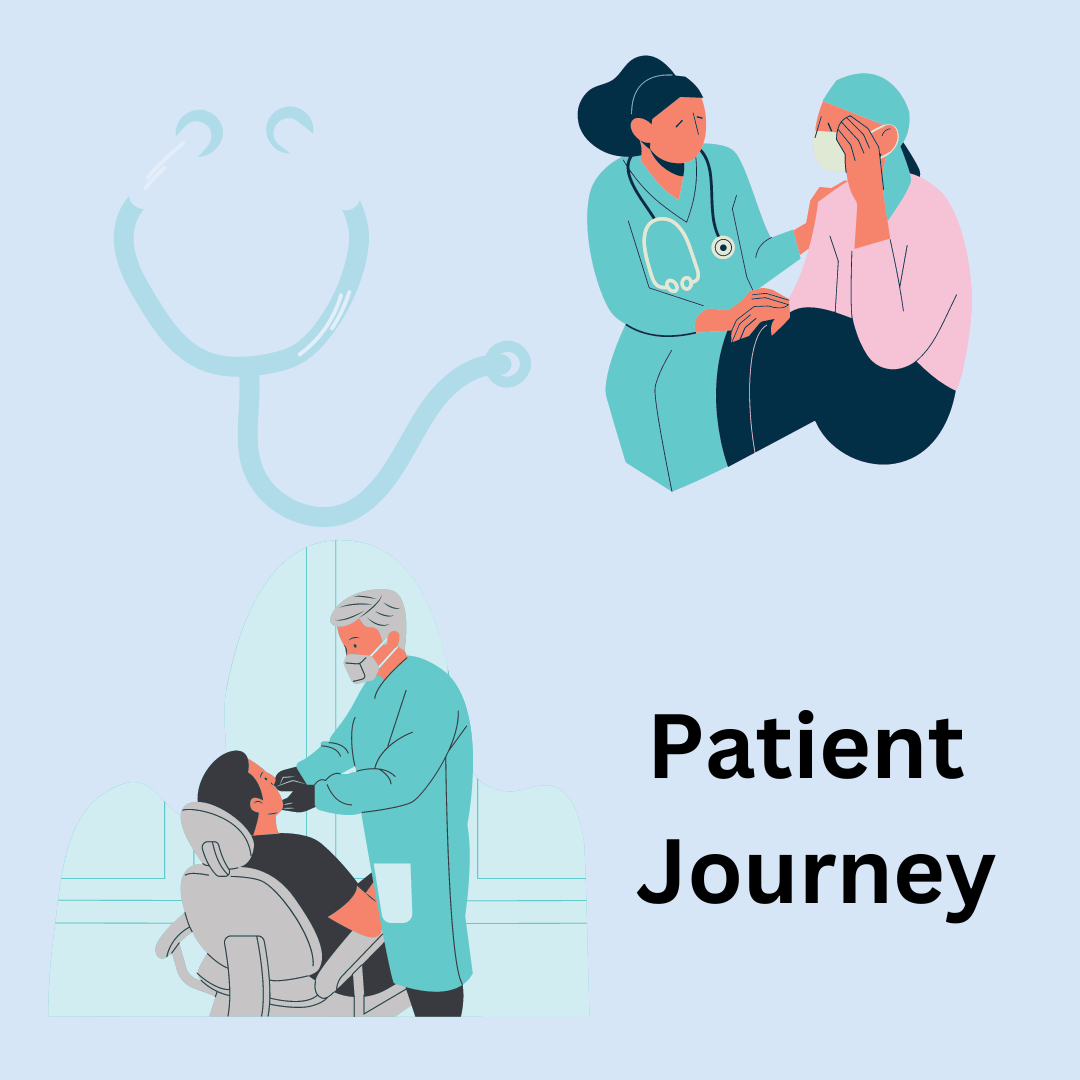Patient journey mapping is the process of helping patients receive consultation from doctors about their health problems quickly so that they will lead healthy and prosperous life. People suffering from diseases require a fast medication from doctors in hospitals. With this vision, healthcare providers constantly adopt patient journey mapping in their businesses to create a seamless experience for patients in the hospitals. In this blog post, you will get to know about the patient journey and why it is essential in hospitals. There are also list-related numbers that emphasize how patient journey mapping works in healthcare centers.
What do you mean by the patient journey?
The whole patient interaction with your business as they attempt to solve their issue is included in the patient journey. Research is the first step, during which the patient seeks to understand their condition better. Today, government websites, websites of healthcare providers, and other specialized websites allow patients to conduct research. Additionally, they can do this by interacting with other patients or medical professionals on more social and interactive platforms like forums and social media. Because it includes the actions taken prior to the patient visiting their preferred healthcare practitioner, this phase of the patient journey can be referred to as the “pre-visit”. The potential carer is met during the consultation step, which might take place in person or online. The third stage, known as post-visit, entails the actions taken after the visit and the diagnosis.

Why is patient journey mapping crucial?
By using patient journey mapping, it is possible to transform the healthcare experience from one that is mostly reactive to one that is proactive. You may reduce care gaps and establish strong preventative routines by creating journeys for your patients. This will eventually help them stay as healthy as possible for as long as possible. Customers and patients are more likely to stay in your system and recommend you to friends and family when you engage them, depending on where they are and what they want.
- Streamline patient workflows and processes by enhancing the functionality and usability of online patient portals, websites, and mobile apps to provide patients greater control over their care, boost patient flow, and save operating costs.
- Enhancing internal internet tools and automating processes can help medical staff adopt protocols and schedules and make it easier for them to foresee and manage difficulties. This will increase staff productivity.
- Clear routes and directions are needed across medical institutions. Finding the appropriate entrance, parking, or cafeteria may all be very challenging tasks in hospitals. Patients and their families can more easily obtain the resources they require by improving signage, illuminating routes, and using landmarks to guide people.
- Improved patient-provider communication is important since it can be difficult for both parties to coordinate care and exchange patient information. This misalignment may result from organizational silos, incompatible technology systems, or a variety of other issues. Stress and anxiety can be reduced by making an effort to close the relevant organizational or technology gap.
- Create timely and seamless updates for patients’ families: It can be quite difficult to wait while a family member is having surgery or to communicate with a doctor to get care for a child. Families wait impatiently for updates, which may be brief and sporadic. A seamless approach that allows families to interact openly and receive regular information via SMS or an app can help alleviate these problems.
- Improved care provided “between visits” and follow-ups with patients and families: It might be difficult to know how well patients, their families, and carers are communicating with medical professionals. Patients may be rushing to answer calls or missing calls, only to discover they can’t reach the provider when they try to call back. On the other hand, healthcare professionals struggle to convey important information to a variety of patients. Better communication systems can increase patient participation, increase the patient’s trust in the care they receive, and make the job of the carer easier.
Working of Patient journey mapping
The Internet plays a crucial role in the success of the improved patient journey. Tech development in the healthcare sector eliminates human error, facilitates the diagnosis, and treatment of patients with less time taken in scheduling their appointments with doctors. mPass Kiosks benefit in boosting the patient experience better by virtually queuing them in hospitals. There are tips to understand the process of the patient journey app with mPass. With the help of mPass, hospital queues are made virtual, and you can easily track your scheduled appointment live, which helps in the reduction of patients’ waiting times.
- Live Token Tracker
In hospitals, it is difficult for patients to wait for their consultation with a doctor by queuing in line. To combat this situation, mPass develops an effective hospital patient journey mapping to make the process of inflow of patients virtual. With mPass, you can now track your token number live from the comfort of your home. When your token number appears, you can take consultations from doctors without having to wait for a long while suffering from diseases. With the help of digital media, patients can view their token numbers on the app or on a live token tracker screen in the hospital.
The main objective of a live token tracker is to relieve the patients from standing physically in queues in hospitals for consultations with doctors. This device also helps hospital receptionists or staff nurses to manage the excess inflow of patients during changes in the weather. Hospital staff easily manages the patients’ line with this device as patients come at their scheduled times for their treatments. Due to this, the risk of spreading of contaminated diseases is also reduced. Patients can easily maintain social distancing from each other, which will prohibit the spreading of infection from one patient to another.
- Publicity through digital media
mPass helps in conducting the publicity of doctors with the help of digital media in hospitals. Patients and their attendants can see the displayed short videos or briefs of doctors on the live screen and select from which doctor they have to take the consultation. Full description of doctors’ profiles has been displayed on the live screen in hospitals which will help patients to directly consult the doctor. With the help of this device, patients do not have to roam around in hospitals and take updates on the success of that particular doctor.
Digital media helps in the publicity of doctors’ profiles among patients, which will automatically reduce the wait times of patients. With the help of this device, patients receive seamless consultation from doctors at their scheduled times and continuous care from them. You will also get the working information of the particular doctor that will save you from negative experiences when you will take a consultation with that doctor. The regular supply of information among patients in hospitals and streamlined workflows boost the efficiency of the patient journey in hospital. This is a great patient queue management system that helps to spread knowledge of doctors among patients.
- Token update device
A token update device is an easy-to-use device that will update the token numbers in real-time. This device displays the token number of patients assigned to them when they have scheduled their appointment with the doctor. With the help of this device, patients easily understand whose patient’s consultation is ongoing in the hospital. Live updation of a token number of patients improves the patient journey in healthcare sector as patients do not have to wait for long for their consultation. This device also eliminates the risk of chaos at the last moments as patients enquire for their number every time they are in a hurry.
Receptionists in hospitals can easily manage the systematic consultation of patients with doctors with this live token update device. Patients can see the updation of the token number live on the digital media screen, which will reduce the waiting time of patients. You can also see live token number updation from the comfort of your home, and when your turn comes, you can consult with your doctor about your sufferings. This device enhances the satisfaction of patients to a great extent as they will think that the consultation is going on a transparent basis.
- Live tracking of the token number
The practice of tracking patients who are waiting in line to enter the hospital for a consultation is known as a patient journey mapping healthcare management system. When used in hospitals, it enables the staff to monitor every patient as they enter and depart the hospital premise. When the turn of patients displays on the token update device for a consultation, the respective doctor has been informed about the medical sufferings of the patients. The patient needs to reach the cabin of the particular doctor as early as possible.
The hospital premises are big enough, which makes it difficult for the receptionist to handle the pathway of each patient on the premises. To combat this situation, mPass creates a live token tracker system that allows the receptionist to track the position of the patients. In addition to this, patients get a link when they book a token along with the token number on the verified mobile number. You will receive a link on the SMS to track your token number wherever you are. Your token number can also be tracked with the help of a mPass schedule that includes a web app and live TV screen.
- Virtual receptionist
The main aim of a virtual receptionist in a healthcare patient journey map is to book a mPass token for patients who are severely ill or do not know the system of the virtual queue management system. You need to call on the phone number of the hospital, and the receptionist is available 24*7 for you virtually. This device may be a new device for many people and due to this, how to operate this device is difficult for you to explain. The idea of a virtual receptionist in the patient journey mapping reduces the additional cost of hiring a receptionist to manage the virtual queues of patients in hospitals. With the help of this device, the efficiency of managing patient inflow has been improved, which extremely benefits the hospital owners.
A virtual receptionist knows all the tricks to book a mPass token for patients immediately so that patients will receive the best consultation and treatment from doctors as soon as possible. If the patients experience a busy reception desk at the time of entering the hospital, then they will create a negative impression of the hospital and staff members as they have to wait for long in the queues. Due to this reason, mPass creates a virtual receptionist feature in the virtual queue management system.
- Token booking from home
Single mPass installation in self-managed, do-it-yourself form is free for all types of counters, locations, and healthcare facilities, among other things. Additionally, end customers are not charged for any walk-in token reservations. If support is needed under multiple kinds of installations, however, support fees are charged at actuals for setup. With the use of free walk-in self-token generation by users themselves, mPass is utilized to efficiently organize walk-in queues. The lines created in this way can be monitored live online. It costs money for people who wish to track line-ups online in real-time and reserve tokens from the comfort of their homes, which results in time savings, increased productivity, and reduced queue frustration.
Patients can generate a mPass token from the comfort of their homes with the help of WhatsApp and WebApp. This helps the patients to schedule their appointment as per the available time slots of the doctors. You can also make an appointment as per your convenience without having to sacrifice your comfort while visiting the hospital. The hospital staff can easily manage the e-tokens on a remote basis. With this device, the understanding of patient journey has been improved, and patients will give positive feedback about the hospital.
- Token booking through QR code scanning
You will receive an onsite mPass token by scanning a QR code in the hospital. We provide ease of booking a token through QR code scanning to enhance the patient journey mapping while maintaining social distancing and touchless points. This device helps the patients to adapt to the new normal to fight the severe pandemic. The hospital staff can easily maintain a crowd management system with the help of implementing a virtual queue management system on the hospital premises. You can book tokens in different ways after scanning a QR code in the hospitals.
- After QR code scanning at onsite installations, the patient can schedule an appointment with the doctor by booking a token from mPass walk-in screen.
- Once a token has been generated, a token number has been sent to the verified mobile number of the patients enabling them to track the consultation number from anywhere.
- Patients can track the token number on their phones after receiving a link.
- With the help of a mPass schedule, you can track your token number through a web app or TV screen on the hospital premises.
- Onsite Kiosk
Another means of booking a token in the hospitals is an onsite Kiosk that enables the patients to receive tokens while maintaining social distancing. The tokens are generated with the help of this mPass Kiosk, as it is a digital form of a token number. Earlier, patients have to wait for a long on the reception counters to receive the token for consulting a doctor. But with the advent of technology, patients can now book their tokens through mPass Kiosk. The main advantage of this device is that patients can even book tokens in the absence of the receptionist and in emergency cases to prevent any further severe illnesses to the patients.
An onsite Kiosk device is a secured device that will not spread the private information of the patients to any other person. You can easily book your token with this device as it has an easy-to-use interface with suggestions if you get stuck in the middle of the token generation. The token generated with the onsite Kiosk can be tracked from the mobile numbers wherever you are. It is not necessary for you to visit the hospital physically and wait for your turn for consultation.
Exceptional features of patient journey mapping
- Enhances patient experience with a live token tracker screen
A patient journey mapping makes the check-in of patients seamless by implementing the onsite Kiosk device, QR code scanner, and token generation from WhatsApp and WebApp. The patient experience is made to resemble waiting in an airport lounge with a live TV token tracker screen. It makes a cool impression initially in the minds of the patients. The hospital’s grounds are sufficiently large to make it challenging for the receptionist to manage each patient’s passage through the facility. To address this issue, mPass develops a live token tracker system that enables the front desk staff member to monitor the location of the patients. Patients also receive a link along with the token number when they book a token on the verified mobile phone number. A link to track your token number from anywhere will be sent to you via SMS. With the help of a mPass schedule that features a web app and live TV screen, you can also keep track of your token number.
- E-token dispensing device
The hospital token system is transformed into an automated E-token creation system. E-token dispensing device is the primary offering of mPass that enables patients to book their tokens in a single step. You need to enter your phone number in the dispensing device, and an electronic token will be generated and sent to your entered phone number instantly. This device is the self-generation of tokens that is portable and comprises a user-friendly interface so that even a small child can generate a token from this device.
E-token dispensing device reduces the high numbers of staff and increases the efficiency and productivity of hospitals to a great extent. With this device, more patients will receive consultation from doctors at a faster pace without having to wait in long queues physically. You need to enter your phone number in the hospital token system, and your token will be generated in an electronic form and sent to your mobile number. A link has also been sent to your phone number through SMS, enabling you to track the live updation of the token number from anywhere.
- Boosts productivity with reduced costs
When you implement a virtual queue management system in the hospital premises, then the costs associated with hospital queue management can be decreased, and simultaneously convenience and productivity can be increased. The virtual receptionist handles more patient inflow than the human receptionist. The token booking by the virtual receptionist can work in the absence of the human receptionist. This reduces the cost of hiring a receptionist on the hospital premises. The productivity of the hospitals has been increased by incorporating various token-generation devices that will operate without the assistance of hospital staff.
The increment in productivity and reduction of costs of the hospitals enable them to work further in the development of queue management systems. Patients can generate tokens for consultations on different machines or devices, such as e-token dispensing devices, onsite kiosks, and QR code scanners. Other devices that are also available in the hospitals that help the patients to generate their tokens are walk-in tokens through mPass schedule and virtual receptionist. All these devices have been made available for the patients 24*7 with a vision to effectively treat them and enable them to lead a happy and healthy life.
- Best virtual queue management system
A patient journey mapping is the best virtual queue management system so that you may virtually wait while at home if you use the greatest virtual queue management solution. The maximum number of inflow of patients can be easily managed by the virtual queue management system and ensure that the maximum number of patients will receive consultations and treatments from doctors without getting delayed.
It is feasible to change the healthcare experience from one that is primarily reactive to one that is proactive by employing patient journey mapping. Making excursions for your patients can help you tighten up preventative practices and eliminate care gaps. Eventually, this will assist them in maintaining their health for as long as feasible. In order to provide patients with more control over their care, increase patient flow, and reduce operational costs, patient workflows and processes must be streamlined. This will improve the performance and usability of online patient portals, websites, and mobile apps.
- Supports various channels for token booking
mPass provides a complete automation solution for queue management in hospitals to manage the long queues of patients. We facilitate the patients to book tokens with the help of multiple channels with a vision to reduce the salaries of hospital staff. You can easily book your token online from the comfort of your home and onsite by visiting the premises of the hospitals. Different channels through which you can book your token available in hospitals are walk-ins, IVRs, and online apps. You can book tokens by multiple means, including:
- The user can book a token from the mPass walk-in screen after scanning the QR Code at the installation site.
- In cases when e-Token dispenser devices are installed at the counter, users scan and book tokens as well.
- The mPass Schedule online app currently offers a free walk-in token to patients.
- The methods mentioned above all use self-generating tokens. The user might also ask the virtual receptionist to reserve their tokens.
- To reserve a token for a premium module, call the virtual receptionist available around the clock.
- Through WhatsApp, patients can obtain the URL for booking tokens.
- Real-time tracking of token
It is challenging for people to wait in line for their appointment with a doctor in hospitals. To address this issue, mPass creates an efficient hospital patient journey map that virtualizes the patient intake procedure. You may now track your token number live from the convenience of your home with mPass. If you are ill and don’t want to wait around for a long time, you can see a doctor as soon as your token number arrives. The app or a live token tracker screen at the hospital both allow patients to view their token numbers with the use of digital technology.
A live token tracker’s major goal is to relieve patients of having to physically wait in hospital lines for doctor visits. Additionally, this technology aids hospital staff nurses or receptionists in controlling the influx of patients that occur as the weather changes. With this technology, hospital staff may easily manage the patient line as long as patients arrive for their appointments on time. This also lessens the possibility of contagious diseases spreading. Infections cannot transfer from one patient to another because of the ease with which patients can maintain social distance from one another.
- Ease of integration of queue system
It streamlines and makes it easier to integrate clients’ current IT systems. In order to handle the lengthy patient lines in hospitals, mPass offers a complete automation solution. In order to lower the pay for medical employees, we make it easier for people to reserve tokens through a variety of channels. You can easily reserve your token online from the convenience of your home or on-site by going to the hospitals’ locations. In hospitals, there are several ways to reserve your token, including walk-ins, IVRs, and online apps.
By improving internal internet tools and automating operations, medical staff may more easily adopt protocols and schedules and anticipate and handle challenges. The output of the personnel will rise as a result. All medical institutions require distinct routes and directions. In hospitals, finding the right entrance, parking, or cafeteria can be a highly difficult chore. By enhancing signs, lighting up roads, and using landmarks to direct people, patients and their families can more readily get the resources they need.
- Ease of implementation
Counter definition and configuration are quite straightforward for numerous domains. The virtual queue management system in hospitals can be easily implemented to enhance patient journey mapping. With this, the patients give positive feedback about the hospitals and services provided by the hospital staff. All electronic token generation devices require low maintenance that will give optimum efficiency in generating tokens for patients.
- Touchless and supports social distancing
With this technology, hospital staff may easily manage the patient line as long as patients arrive for their appointments on time. This also lessens the possibility of contagious diseases spreading. Infections cannot transfer from one patient to another because of the ease with which patients can maintain social distance from one another. In the hospital, you can get an onsite mPass token by scanning a QR code. In order to improve the mapping of the patient trip while maintaining social distance and touchless places, we make booking a token simply by QR code scanning. In order to combat the catastrophic pandemic, this device aids patients in adjusting to the new normal. By putting in place a virtual queue management system on the hospital grounds, the personnel may easily maintain a crowd control system.
An on-site Kiosk that enables patients to receive tokens while preserving social distance is another option for booking a token in hospitals. This mPass Kiosk generates the tokens since it is a digital representation of a token number. Before, patients had to wait a while at the reception desks to get the token for a doctor’s visit. However, thanks to advancements in technology, patients can now reserve their tokens via the mPass Kiosk. The main benefit of this technology is that patients can even reserve tokens when there is no receptionist present and in an emergency to protect the patients from contracting any more serious illnesses.
Conclusion
mPass provides the best onsite kiosk and web app to schedule the appointments of doctors with patients. The devices implemented by us enhance the patient journey mapping in the hospitals.
